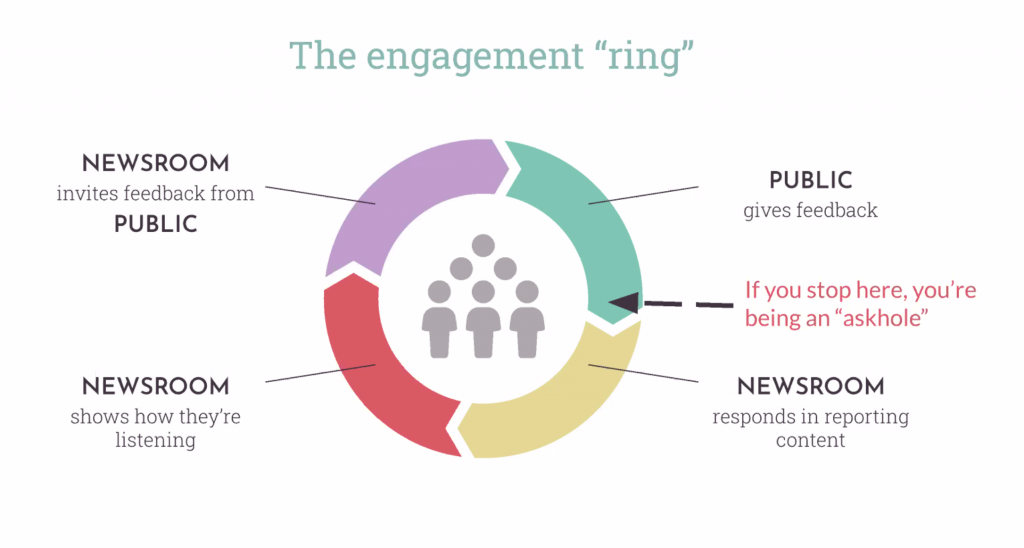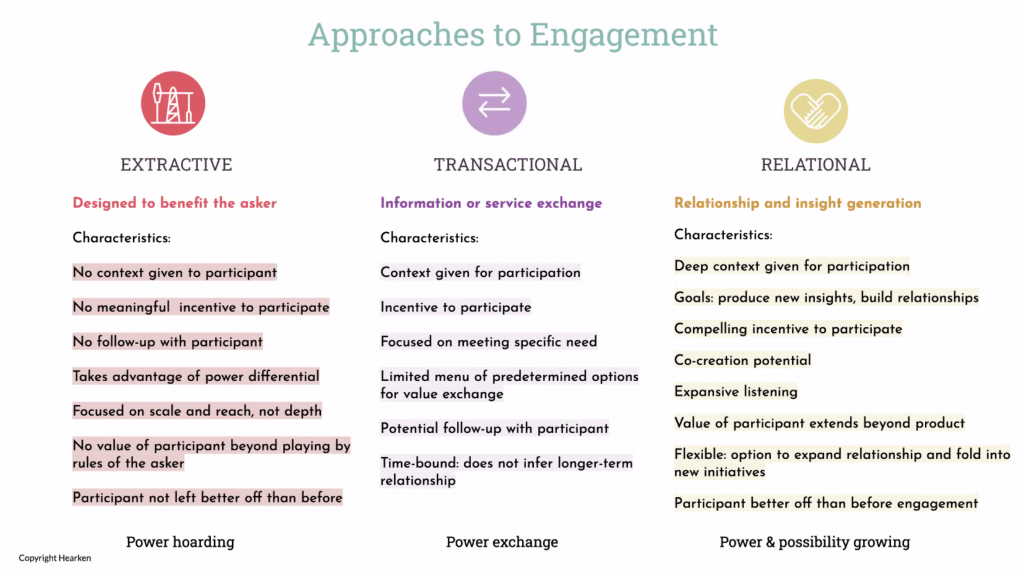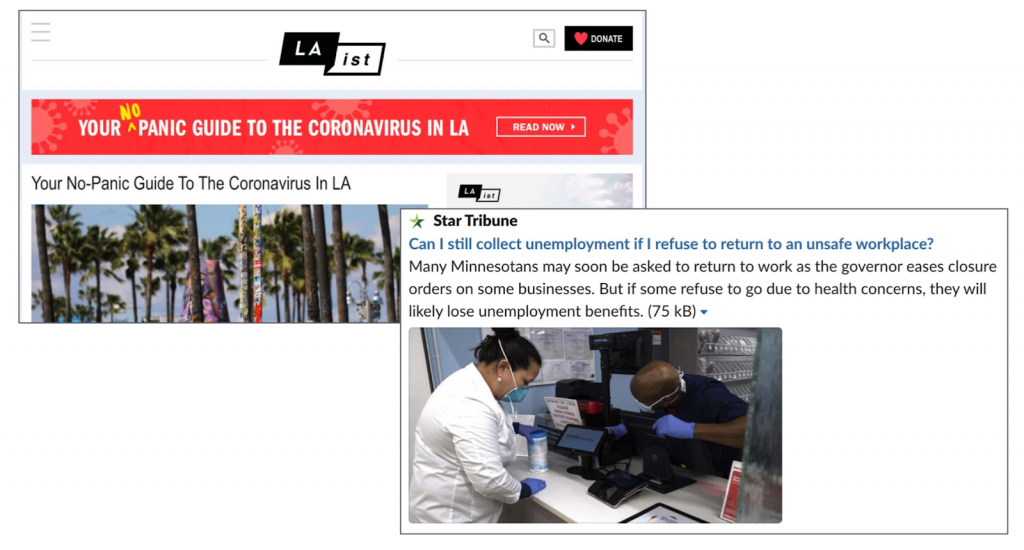The two headlines of 2020, a worldwide pandemic and a nationwide conversation about racial equality, both underline the critical importance of including the voice of the audience in our journalism. Whether it’s identifying and answering the questions folks have right now about the coronavirus, or ensuring that the full range of diverse voices in our community are represented and heard, authentic listening and meaningful audience engagement have never been more critical to the mission of journalism.
Sadly, however, “Audience Engagement” in many newsrooms has devolved into so-called “like-bait”: posting on social with the short-sighted goal of enticing likes and shares. In this approach, winning on social is reduced to a number like ‘share of voice,’ with the metric treated as more important than what it purports to measure. The challenge for newsrooms is to evolve beyond likes and shares, to achieve meaningful audience engagement.
“Focus on the needs of the audience, not your own.” That is the essence of a meaningful approach to engagement, says Jennifer Brandel, longtime CEO and now board chair of Hearken, a platform that helps news organizations create and manage audience engagement. She spoke recently to the local TV stations participating in the Knight-ASU Table Stakes program for news transformation about how to design more impactful audience strategies.
Before assuming your team is crushing it, take Brandel’s quick self-assessment (be honest, you’d only be cheating yourself) on the current state of audience engagement in your newsroom. Give yourself one point for each strong “YES”:

I won’t ask your score, but I will share that in my work with local TV newsrooms this informal quiz generates a lot of scores of 2 or 3. So let’s just say that most newsrooms will have an “opportunity” for more meaningful engagement with their audiences.
Why do so many newsrooms fall short in this area? Brandel notes that traditional news organizations were built in the era of broadcast on a model she notes was “closer to a parent-child relationship,” where news stations focused on “telling the audience the news,” not listening.
Brandel illustrates this well via what she calls the “engagement ring.” Does your newsroom complete the loop with the audience, or do you tend to stop once you get what you want from the audience? I particularly appreciate the term “askhole” to describe newsrooms that ASK, and then don’t respond!
The “Engagement Ring”

For Brandel, the key is to move the newsroom from an “extractive” or merely “transactional” approach to one that’s truly relational. Extractive approaches are about getting what the newsroom wants from the audience. Transactional approaches are somewhat better, in that there is at least an exchange of value between the news organization and the audience. But the key to building loyalty is a relational approach to engagement.

A worthwhile newsroom exercise is to gather a group to examine your current practices against these three categories of engagement, honestly identify where the approach is primarily extractive or transactional and look for ways to ‘move to the right’ in terms of engagement that has mutual value and builds long-term trust and loyalty.
Hearken has been adopted by many local newsrooms, especially in publishing, as a way of building direct audience relationships (not mediated by Facebook.)


Of special relevance to broadcasters is a recent case study from a Danish broadcaster. TV 2/Funen chose to go ‘all-in” on intensive audience engagement to guide its COVID-19 coverage. The results documented in this case study were impressive:
- More than 150 original, user-generated news angles to investigate
- More than 20 articles showcasing audience submissions
- 5 articles in the top-50 of most-read articles on the website
- Jump in direct relationships with audience
- Increased traffic via Google searches (one article drew 65% of sessions through Google searches and generated 4x more views than average)
By three weeks into its efforts, the station had received 400+ original user-generated news angles to explore, authored more than 50 original articles powered by that input, and impressively, saw a +32% increase in average reading time on audience-initiated articles compared to the overall average in the same period.
Deeper audience strategies are essential to coverage of both the pandemic and issues of racial justice; but Brandel notes 2020’s other critical test of journalists also looms: covering the 2020 election. Hearken has joined with other engagement groups to offer Election SOS, free targeted training for journalists covering U.S. elections, with specific strategies for engagement, trust, and election protection. The non-partisan initiative offers best practices, resources and support around election coverage and the unique threats of 2020 elections.
The benefits to newsrooms of fostering this deeper kind of community connection include:
- More and better story ideas; which result in…
- Stories that are more relevant to the audience, which lead to…
- Deeper engagement with content (measured by articles read, depth of read, session time), leading ultimately to…
- Long-term growth in trust in and loyalty to the news brand
The core difference, of course, between this approach and the “like/share this” is loyalty. A like-bait strategy has to be repeated over and over to keep propping up the clicks. Brandel says this deeper approach grows long-term loyalty, turning samplers into loyalists, and loyalists into evangelists for your news brand.
